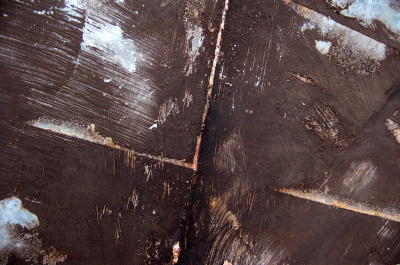What Are The Types Of Asbestos?
All around the world, asbestos is a naturally occurring mineral. It is made of strong, thin fibres that can withstand heat and fire. For hundreds of years, it has been a component of building materials, but in recent years, its possibly detrimental health consequences have come to light. As a result, several countries have severely limited and regulated its usage. There are six different kinds of asbestos: anthophyllite, actinolite, tremolite, crocidolite (commonly known as blue asbestos), and chrysotile (serpentine mineral). All forms of asbestos are harmful if disturbed or breathed in, however, some are regarded as riskier than others. The most dangerous fibres are believed to be those made of crocidolite and amosite. Amosite fibres are very poisonous when breathed, and crocidolite is the mineral that is most likely to induce mesothelioma, a rare and severe form of cancer.
Are All Types Of Asbestos Dangerous?
Asbestos, in any form, may be harmful to human health. Asbestos is classified as a Group 1 carcinogen by the World Health Organisation (WHO), which means that any form of the chemical may raise a person's chance of acquiring cancer. According to the International Agency for Research on Cancer (IARC), 125 million individuals worldwide may have been exposed to asbestos in the last few years. The level of hazard connected with each form of asbestos varies according to a variety of circumstances. Crocidolite and amosite fibres, for example, are the most harmful because they are easier to inhale and may travel longer into the lungs before breaking down.
Furthermore, the length of time and amount of asbestos that a person is exposed to will influence how toxic the substance is for them. The International Agency for Research on Cancer has determined that every kind of asbestos causes human cancer. Asbestos causes lung, larynx (voice box), ovarian, and mesothelioma (a kind of cancer that forms on the protective tissue that shields the lungs or belly). Long-term exposure to high levels of asbestos mostly affects the lungs, leading to asbestosis, a disorder that makes breathing challenging and causes the heart to expand. It may take decades for asbestosis to become evident. In people with asbestosis, cancer risk is higher. Lower levels of asbestos exposure may eventually result in a widespread (pleural plaques) or regional (diffuse pleural thickening) thickening of the lung lining.

Need assistance finding asbestos removal near you?
Get a QuoteColours Of Asbestos
Numerous hues are available for asbestos. White, grey, brown, and blue asbestos are the most prevalent varieties. Chrysotile, a serpentine mineral, makes up white asbestos, whilst actinolite and tremolite make up grey asbestos. Amosite often makes up brown asbestos, while crocidolite makes up blue asbestos. Asbestos colour plays a crucial role in identifying the type of asbestos present in a given product. For instance, a homeowner will know it is probably chrysotile if they discover a white fibre in their walls. If someone finds a brown or blue fibre, they know it may contain crocidolite or amosite, which are both more hazardous and need to be handled carefully.
Does Asbestos Smell?
There is no smell of asbestos. However, depending on the other elements they are coupled with, products that contain asbestos could have a smell. Plaster and vinyl floor tiles, for instance, may smell distinctive when they contain asbestos, although such smells aren't always a sign that they do. Professionals need to collect a sample and send it to a lab for testing in order to determine for sure whether a product contains asbestos. This is the only approach to positively identify asbestos in a structure or building. It's crucial to get in touch with a certified asbestos abatement specialist who can properly remove the material if the test results indeed reveal the presence of asbestos.
People frequently link asbestos to the materials that surround it. If you suspect that you smell asbestos, it's more probable that you're actually smelling other scents from construction or other similar sources. What you're doing to release asbestos particles typically affects what you smell. Breaking the texture of the ceiling when cleaning or painting might release asbestos fibres into the air. In this instance, the paint or the cleaning chemical you're using on the ceiling would smell, not the asbestos.
What Does Asbestos Look Like?
Small, resilient, heat-resistant filaments that resemble asbestos are seen in the material. Numerous items, such as insulation, roofing materials, ceiling tiles, floor tiles, and cement goods, include these fibres. Along with various fabrics and adhesives, they are also present in the brake pads and clutches of automobiles. It's crucial to be able to spot the filaments when inspecting a product for asbestos. Smaller than human hair, asbestos fibres are typically transparent or white in hue. They might also be yellow or greyish-green in colour.
Without a magnifying glass, it might be challenging to spot asbestos particles, but if you have any doubts about whether a product contains asbestos, keep your distance and get the goods examined by an expert. Due to their low weight and tiny size, asbestos fibres may float in the air for days. Although asbestos has certain distinguishing characteristics, examining it visually frequently necessitates the use of a microscope, which can reveal its colour and form. This is due to the fact that asbestos may disintegrate into fibres that are so minute that they are invisible to the unaided eye. In actuality, their fibres often range in length from 0.1 to 10 m.
Only clusters or clumps of asbestos are visible; otherwise, the individual fibres are too tiny to be seen without a microscope. Asbestos fibres are frequently tiny, which allows them to remain in the air for days without being noticed. As a result, they can cause major health problems when they are breathed into someone's lungs. Friable asbestos is frequently found in items like thermal insulation for pipes, water heater insulation, joint compounds, ceiling tiles, plasters, and wallboards; as it can be crumbled, pulverised, or converted to powder by hand pressure, it poses a serious risk to individuals who are exposed.
In this article:

